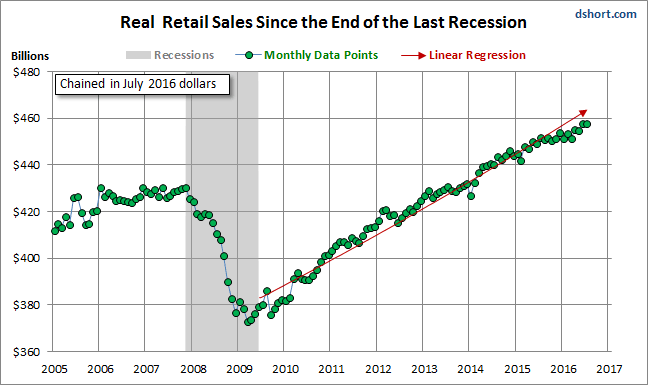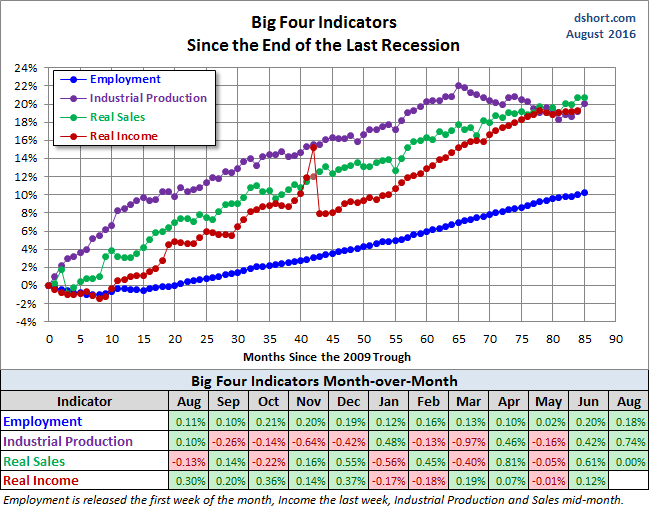Note from dshort: With yesterday’s release of the Consumer Price Index for October, I’ve updated Real Retail Sales for October.
Official recession calls are the responsibility of the NBER Business Cycle Dating Committee, which is understandably vague about the specific indicators on which they base their decisions. This committee statement is about as close as they get to identifying their method.
There is, however, a general belief that there are four big indicators that the committee weighs heavily in their cycle identification process. They are:
The Latest Indicator Data
Real Retail Sales will be especially interesting to watch over the coming months. The rather dramatic decline in gasoline prices in recent months will no doubt boost discretionary spending, and we’re now entering the merry season holiday spending. After a strong August report, September real sales were surprisingly weak, but October has seen a partial bounce back in spending. Will holiday sales, with the advantage of lower gas prices, put this indicator on a trend of stronger growth? One potential obstacle would be another savage winter such as we saw last year. The odds of a repeat of that severity are no doubt low. However, recent news items about the lake-effect blzzard in Buffalo, serve as a “chilling reminder” that weather can play a factor in the economy.

The Generic Big Four
The chart and table below illustrate the performance of the generic Big Four with an overlay of a simple average of the four since the end of the Great Recession. The data points show the cumulative percent change from a zero starting point for June 2009. We now have the three indicator updates for the 61th month following the recession. The Big Four Average is (gray line below).

Current Assessment and Outlook
The overall picture of the US economy had been one of slow recovery from the Great Recession with a clearly documented contraction during the winter, as reflected in Q1 GDP. Data for Q2 supported the consensus view that severe winter weather was responsible for the Q1 contraction — that it was not the beginnings of a business cycle decline. However, the average of these indicators in recent months suggests that, despite the Q2 rebound in GDP, the economy remains near stall speed.













Leave A Comment